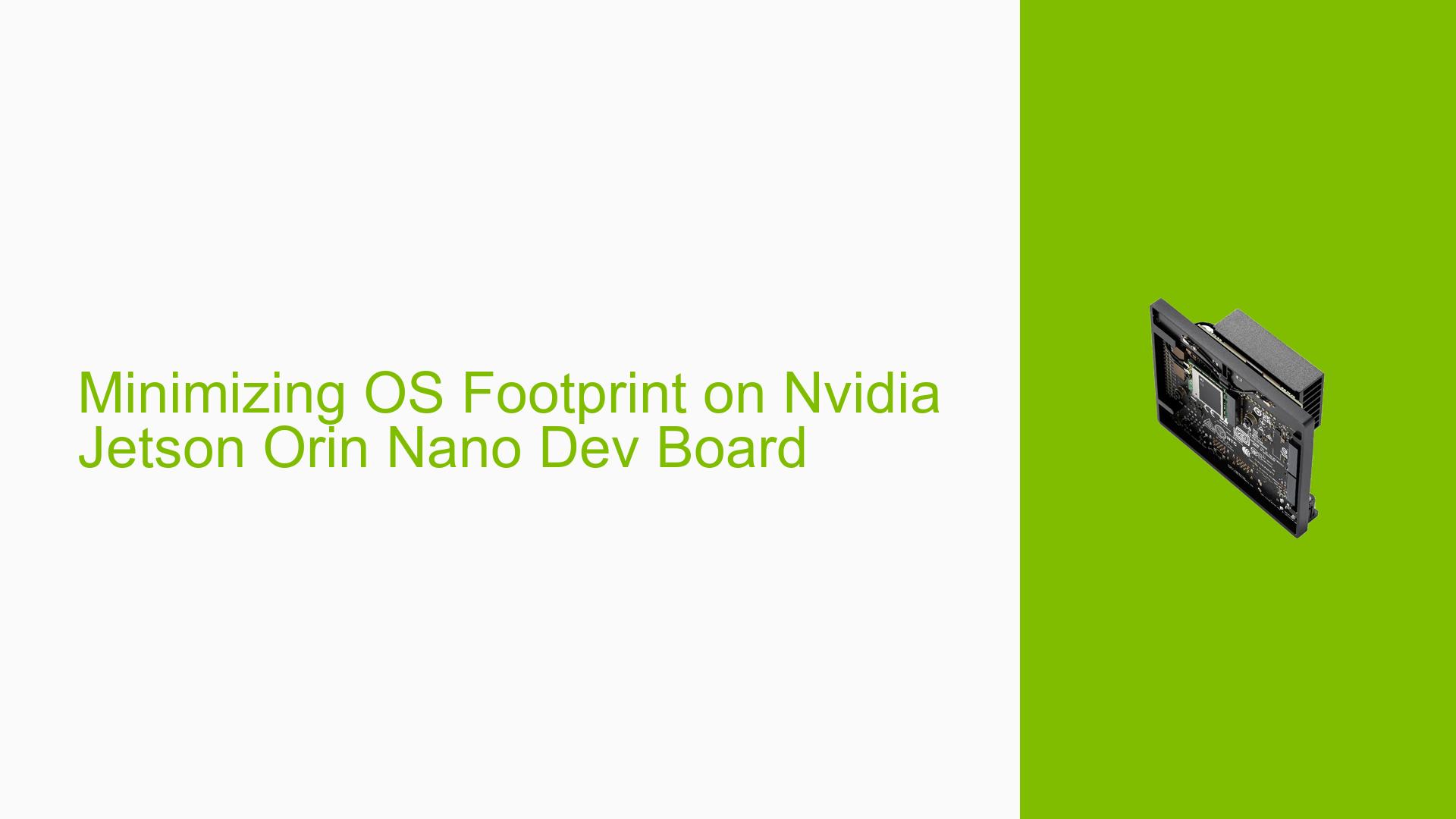Minimizing OS Footprint on Nvidia Jetson Orin Nano Dev Board
Issue Overview
Users are seeking ways to minimize the operating system footprint on the Nvidia Jetson Orin Nano Developer Board. The primary goal is to run the board with a minimal OS configuration, specifically for headless operation (without desktop environment), while maintaining support for essential components such as USB3 camera drivers and Ethernet connectivity. Users are also interested in potential real-time OS options and official methods to reduce the OS footprint beyond the standard JetPack with Ubuntu desktop.
Possible Causes
-
Lack of official minimal OS images: Nvidia may not provide pre-built minimal OS images for the Jetson Orin Nano, leading users to seek alternative solutions.
-
Limited documentation: Insufficient official documentation on minimizing the OS footprint may contribute to user confusion and the need for community-driven solutions.
-
Hardware limitations: The Jetson Orin Nano’s hardware architecture may not be designed for hard real-time operations, limiting certain OS optimization options.
-
Software dependencies: The standard JetPack may include components that are difficult to remove without affecting system stability or functionality.
Troubleshooting Steps, Solutions & Fixes
-
Wait for upcoming JetPack/SDK Manager release:
- A new major release of JetPack/SDK Manager is expected to introduce Ubuntu 22.04 support and features for installing other OS flavors.
- This update may allow users to pick and choose components, facilitating the creation of a minimal system or alternative Linux distributions.
-
Utilize Debian bootstrapping:
- Debian-based distributions use bootstrapping to create minimal root filesystems.
- Follow these steps to create a minimal Debian-based system:
a. Install debootstrap on your host system.
b. Use debootstrap to create a minimal root filesystem with only essential packages.
c. Add non-essential software as needed. - Refer to the Debian wiki for detailed instructions:
https://wiki.debian.org/Debootstrap
https://wiki.debian.org/DebianBootstrap
-
Consider third-party real-time OS solutions:
- While the Jetson Orin Nano is not designed for hard real-time operations, third-party solutions exist.
- Investigate Redhawk real-time, an NVIDIA development partner offering real-time OS options:
https://developer.nvidia.com/embedded/ecosystem?query=redhawk&page=1
-
Manual OS reduction:
- Remove unnecessary packages and services from the standard JetPack installation.
- Disable graphical interface and remove desktop-related packages.
- Use
systemctlto disable unneeded services:sudo systemctl disable <service-name> - Uninstall unnecessary packages:
sudo apt remove <package-name> - Be cautious when removing packages to avoid breaking system dependencies.
-
Custom kernel compilation:
- For advanced users, consider compiling a custom kernel with only the required modules and drivers.
- This process requires in-depth knowledge of the Jetson Orin Nano’s hardware and Linux kernel compilation.
-
Use external storage for additional space:
- If minimizing OS footprint is challenging, consider using an external SSD for additional storage.
- This approach allows for a standard OS installation while providing ample space for applications and data.
-
Community resources:
- Monitor the Nvidia Developer forums and community channels for user-created minimal OS images or scripts.
- Contribute to open-source projects aimed at creating minimal Jetson Orin Nano OS configurations.
-
Documentation and support:
- Regularly check Nvidia’s official documentation for updates on OS optimization techniques.
- Reach out to Nvidia support for guidance on officially supported methods to reduce OS footprint.
Remember that while minimizing the OS footprint can improve performance and reduce resource usage, it may also limit functionality or complicate future updates. Always ensure that your minimal configuration meets all necessary requirements for your specific use case.
